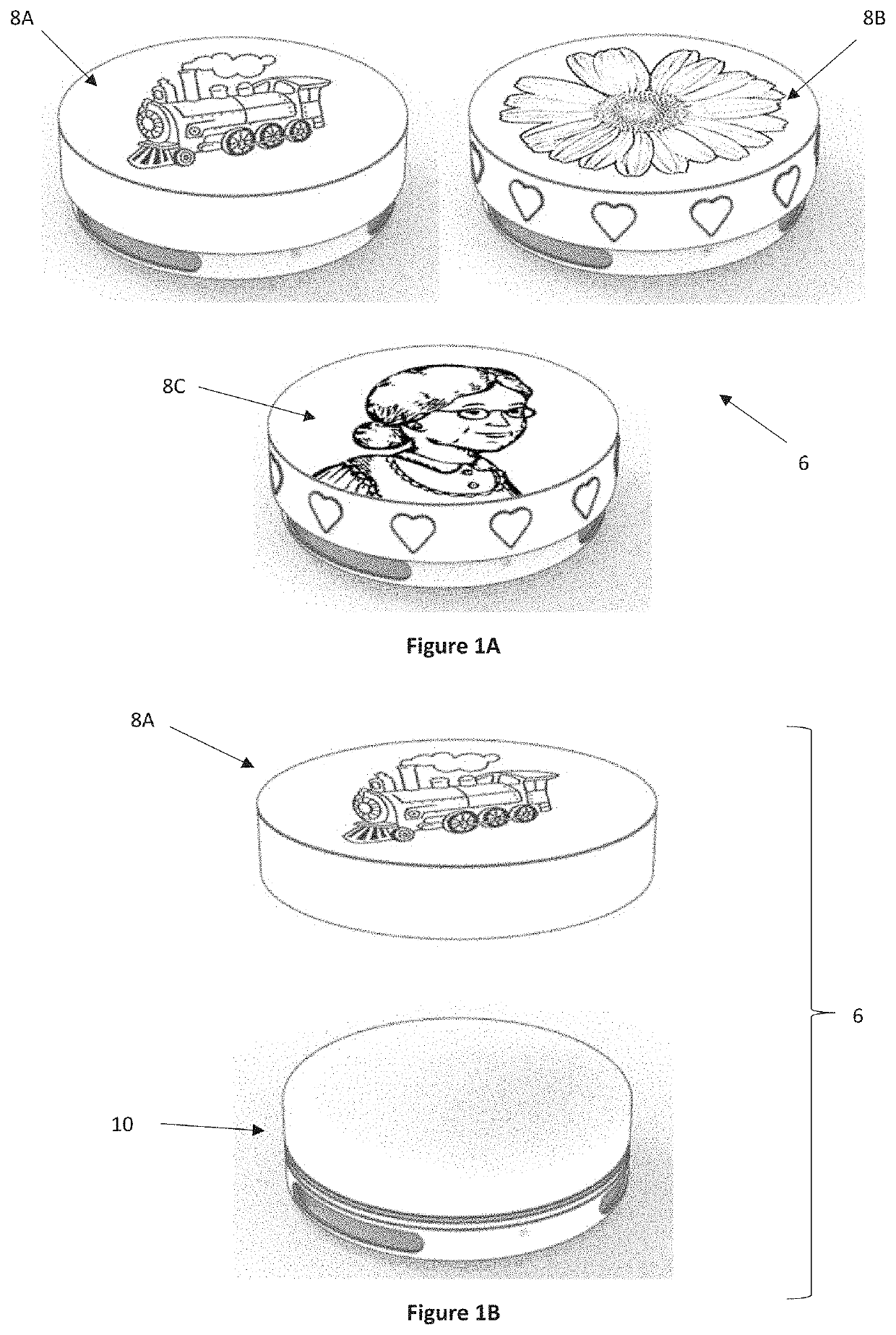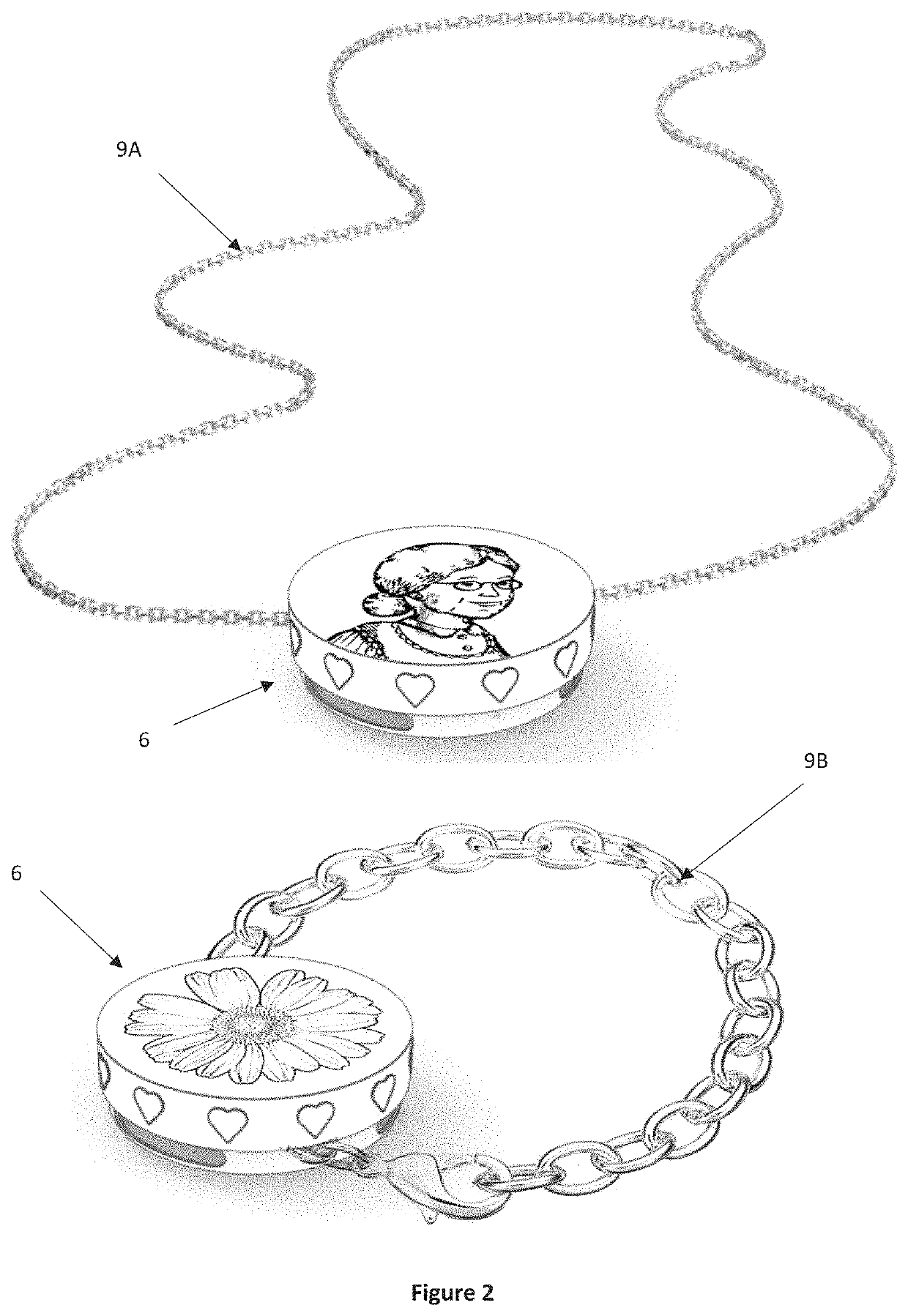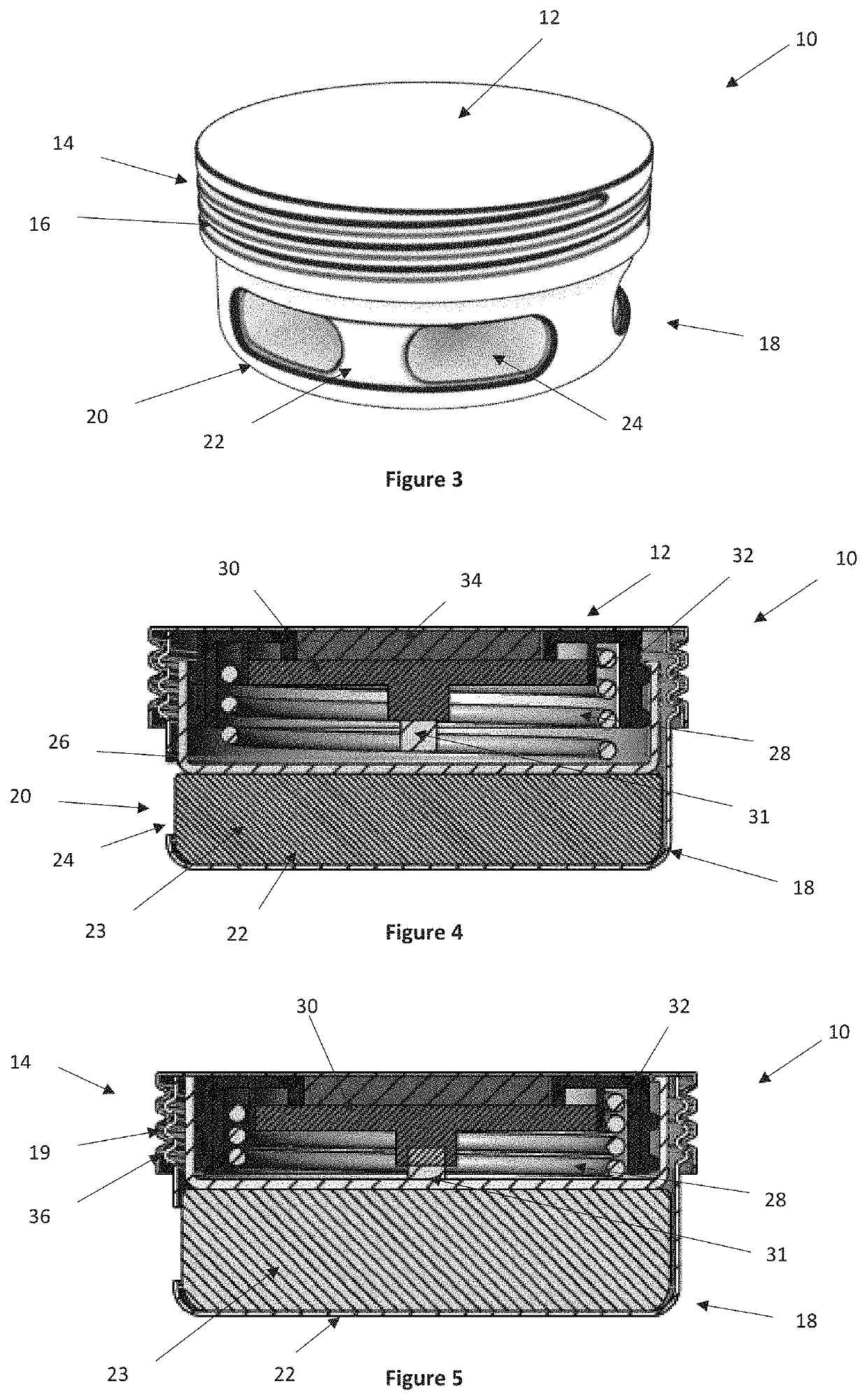Water safety alarm and supervision aid including methodology embodied in the alarm for alerting a third party via a communications network
a technology of water safety alarm and monitoring aid, which is applied in the direction of life-saving, electric/electromagnetic audible signalling, visible signalling system, etc., can solve the problems of drowning, children especially do not comprehend the danger of water, and the danger of drowning is ever present in many environments, so as to achieve constant vigilance
- Summary
- Abstract
- Description
- Claims
- Application Information
AI Technical Summary
Benefits of technology
Problems solved by technology
Method used
Image
Examples
first embodiment
[0110]Referring now to FIGS. 3 to 6, a body 10 of a wearable device in accordance with the present invention is shown. Body 10 is generally cylindrically shaped, having a lid 12 with a circularly-shaped uppermost (in use) surface and sidewalls 14 which include an external thread 16 onto which a cap (not shown in FIGS. 3 to 6) can be screwed onto. Body 10 also has a base portion 18 which includes three elongate apertures, shown generally as slots 20 spaced therearound. Visible in FIG. 3 through the slots 20 is expandable disk 22, which includes a hydromorphic material 23 (see FIGS. 4 and 5). Expandable disk 22 has a number of water permeable windows 24 spaced around its sidewall, through which water can pass and thus make contact with the hydromorphic material 23, as will be discussed below. Water permeable windows 24 are formed from a material which will allow water to pass therethrough, but will not allow the hydromorphic material 23 to escape.
[0111]Referring now to FIG. 6, all of ...
second embodiment
[0114]Referring now to FIGS. 7 to 11, a body of a wearable device in accordance with the present invention is shown in the form of body 40. Body 40 is generally cylindrically shaped, having a circularly-shaped upper portion 42 having sidewalls 44. Body 40 also has a base portion 46 which includes two opposing elongate apertures, shown generally as slots 48. A visual feature in the form of a cover (not shown) is attachable to body 40 in the manner described above.
[0115]As can be seen in FIGS. 8 and 9, upper portion 42 includes threads which enables it to be screwed onto corresponding threads on the base portion 46 in order to securely join the portions. A recess 50 is provided in the base portion 46 for receiving a button cell battery 52 (see FIG. 11).
[0116]An exploded view of the body 40 is shown in FIG. 11. At the top of the Figure is the upper portion 42, with all the other components of the body 40 being housed in the lower portion 46. Lower portion 46 includes a base 54, in whic...
PUM
 Login to View More
Login to View More Abstract
Description
Claims
Application Information
 Login to View More
Login to View More - R&D
- Intellectual Property
- Life Sciences
- Materials
- Tech Scout
- Unparalleled Data Quality
- Higher Quality Content
- 60% Fewer Hallucinations
Browse by: Latest US Patents, China's latest patents, Technical Efficacy Thesaurus, Application Domain, Technology Topic, Popular Technical Reports.
© 2025 PatSnap. All rights reserved.Legal|Privacy policy|Modern Slavery Act Transparency Statement|Sitemap|About US| Contact US: help@patsnap.com



